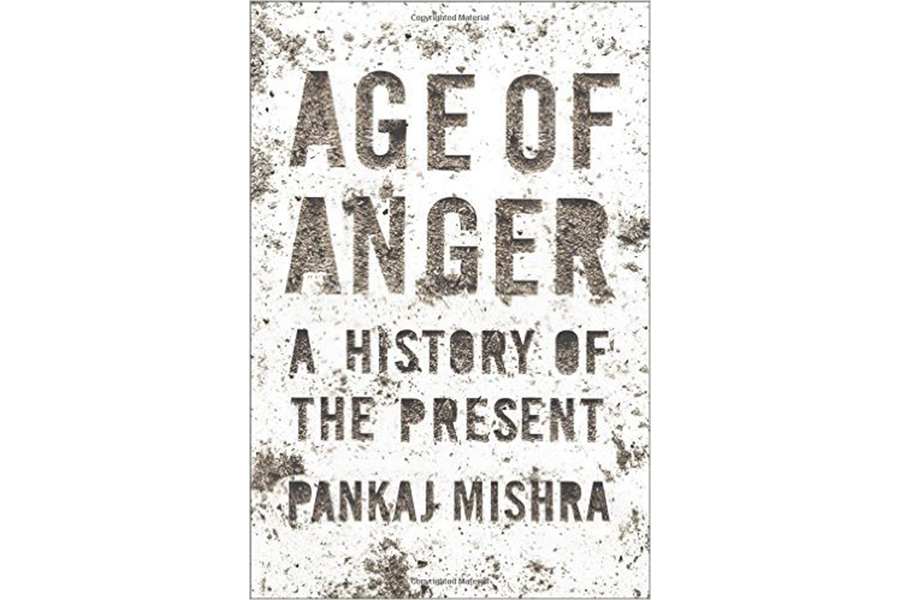'Age of Anger' seeks to lay bare the roots of today's global intolerance
Loading...
Columnist and historian Pankaj Mishra has named a moment and an era: His brilliant new book Age of Anger: A History of the Present looks at the rising tide of radical nationalism, racism, intolerance, misogyny, xenophobia, and fascism that's sweeping away calmer and more measured opposition all over the world, and he attempts to understand the phenomena before it engulfs everybody on the planet.
Readers of Mishra's voluminous writings (including 2012's excellent "From the Ruins of Empire") will expect him to look to the past in hopes of understanding the present, and much of Age of Anger does just this, drawing sometimes tenuous but always thought-provoking lines from the Enlightenment philosophers to Rousseau's “often contradictory ideas” to the rantings of Italian poet and proto-fascist Gabriele D'Annunzio. Mishra's overview – amazingly capacious, considering the book's relative brevity – is grounded in a study of people across the spectrum, “testosterone-driven teenagers as well as pedantic socialists,” all joined by “an existential resentment of other people's being, caused by an intense mix of envy and sense of humiliation and powerlessness, ressentiment, as it lingers and deepens, poisons civil society and undermines political liberty, and is presently making for a global turn to authoritarianism and toxic forms of chauvinism.”
That global turn to authoritarianism, so aptly summarized as an “age of anger,” has startled with its sheer vehemence in recent years, exemplified by the election of hard-right governments in countries across the world, by the rejection of classic social liberalism reflected in such movements as “Brexit,” and of course by the rise of radical Islamic terrorist attacks in the Muslim world and throughout the West. Incidents of racism, anti-Semitism, and violent misogyny are on the rise after decades of dwindling, and for these ills and half a dozen others, Mishra identifies a number of key factors at the heart of the maelstrom – foremost among them a pervasive feeling of dispossession. “Since actual mobility is achieved only by a few, the quest for some unmistakable proof of superior status and identity replaces the ideal of success for many,” he writes. “Consequently, the pitiless dichotomy of us-versus-them at the foundation of modern nationalism is reinforced.”
Naturally, any invocation of us-versus-them dichotomies in the 21st century will have to deal in some detail with that subject already mentioned: the rise of radical Islam in the years since the 9/11 terrorist attacks. About this subject Mishra writes with unsettling force about the culpability of the West. “It is now clear that the post-9/11policies of pre-emptive war, massive retaliation, regime change, nation-building, and reforming Islam have failed – catastrophically failed – while the dirty war against the West's own Enlightenment – inadvertently pursued through extrajudicial murder, torture, rendition, indefinite detention and massive surveillance – has been a wild success,” he contends. “The uncodified and unbridled violence of the 'war on terror' ushered in the present era of absolute enmity in which the adversaries, scornful of all compromise, seek to annihilate each other.” Such thinking is problematic at best; “absolute enmity” motivated the 9/11 terrorists to fly planes into buildings well before there was a codified “war on terror,” after all, and resting so much of the blame for that enmity on the blunders of the West can have the dangerous effect of soft-pedaling radical Islam's own intolerance. As Mishra makes clear throughout his book, there's plenty of blame to go around.
And one of the hardest-hit sub-groups, he insists, are the world's young people, “hundreds of millions of young people condemned to superfluousness” by widening income inequalities around the globe, “doomed to hurtle, like many Europeans and Russians in the past, between a sense of inadequacy and fantasies of revenge.” As Mishra sees it, these young people are the hardest hit by “triumphant axioms of individual autonomy and interest-seeking” and the most likely to fall victim to the twin evils of anomie and anarchic violence.
"Age of Anger" is a fiercely literate and eloquent status report on systemic madness that seems to be the young 21st century's defining characteristic, and Mishra isn't afraid to follow some of his own theories to their ultimate implications. The widening gap he describes between the haves and the have-nots is personal as well as political, a matter of natures as well as nationalities or economies.
“The global civil war,” as he calls it, “is a deeply intimate event; its Maginot Line runs through individual hearts and souls.” This can make any prospect of solving or even squarely addressing this new civil war extremely daunting, and indeed Mishra's book offers little in the way of possible fixes to any of the problems whose deep roots he exposes. But even so, one potentially transformative note is struck throughout the book: young people. If the world's millions of young people can somehow free themselves from the cycle of boredom and disaffection, they may be able to free the world from its age of anger. It's a slim hope, but a great deal might rely on it.








